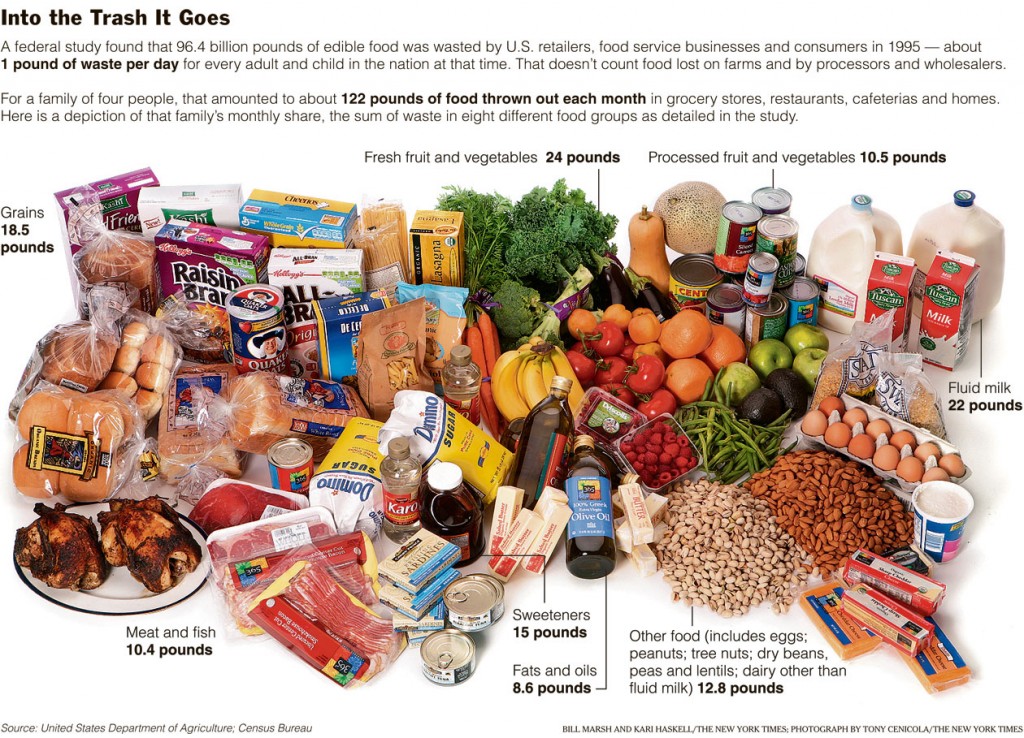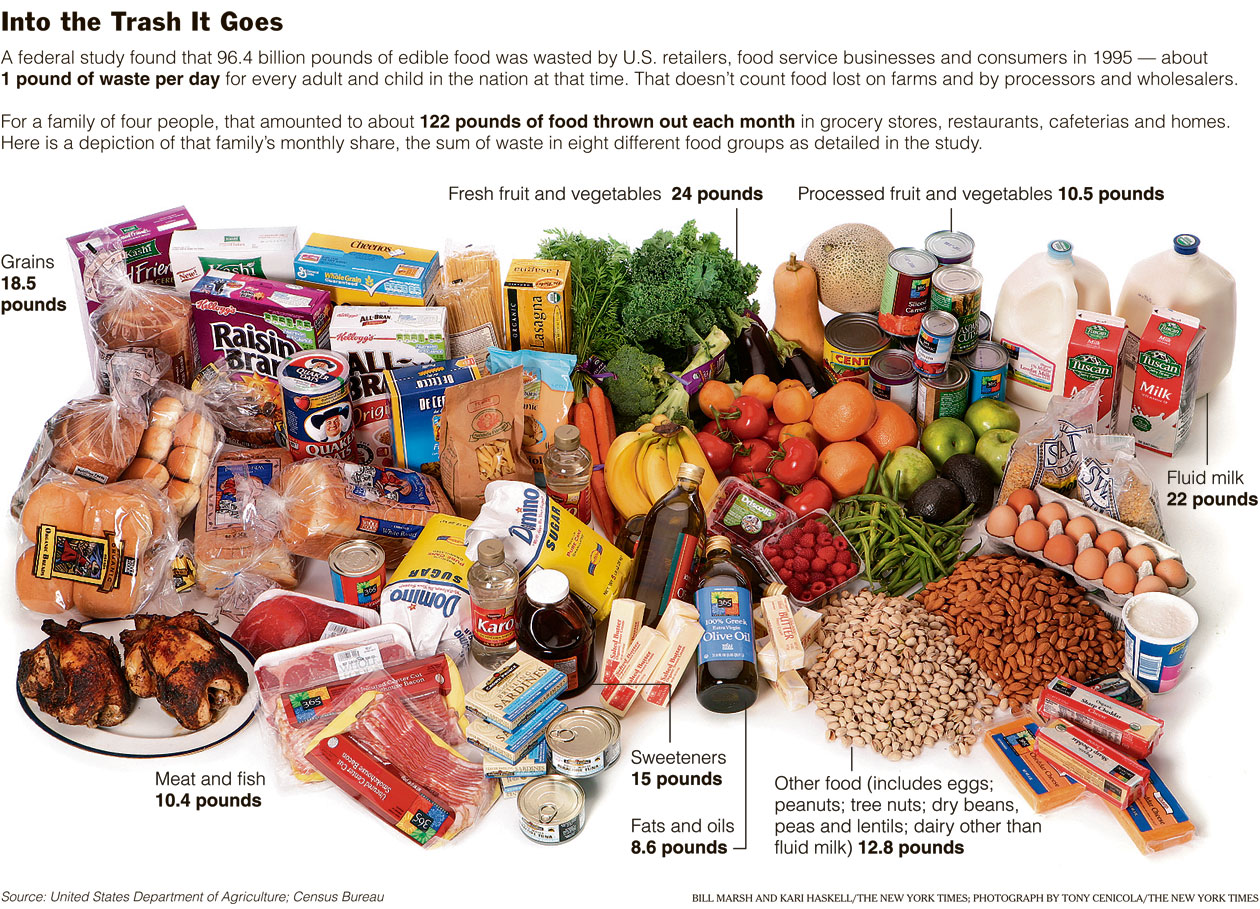The Stockholm International Water Institute estimated in a 2008 policy brief – Saving Water: From Field to Fork – that food loss and waste between the farmers’ field and the consumers’ table is approximately 50%. And one of our own government studies puts our waste at 27% of the food available for consumption.
While one quarter to one third of all food produced is “wasted” between distribution, retailing, and consumption, add onto that supermarket “shrinkage” or loss calculated for non-saleable perishable products (8-10%). When you consider produce alone, the total is much higher.
Inefficient harvesting, transport, storage and packing contributes a large portion to that waste in undeveloped and developing countries, in developed countries like ours there are significant losses – and waste – in food processing, wholesale and retail distribution, and households, restaurants, and food services where food is consumed.
Exactly how much food does the average American waste after purchase? This graphic appeared in the New York Times; it is a grim reminder!

In the U.S. we have an additional problem: the number of overweight and obese people who contribute to the problem by adding overeating to food waste.
One of the major causes of food waste is an increase in demand for “sensitive” and perishable food items that leads to additional risk of loss, in quality and quantity. For high quality – and high priced – premium fruits and vegetables, it may be just days before they become less attractive to the shopper who expects perfection in return for the high cost.
The gap between the amount of food produced and the amount actually consumed can be defined by three key terms:
Spoilage – loss of harvested crops and other food items during transport, storage, processing and packaging.
Conversion – use of cereals and other plant based products as feed to produce animal foods.
Wastage – deliberate discarding of food that is “fit for purpose and perfectly good to eat.”
Considerable waste occurs in the latter part of the food chain, through wholesalers, food retailers, food service, restaurants, and households. The retail portion of the food industry has comparatively high rates of loss – about 26%. Consumers tend to throw away a significant fraction of the food they have paid for and taken home.
In addition to high levels of loss and wastage, more and more often we are seeing huge amounts of food destroyed as a result of food recalls and driven by concerns for food safety.
Every link in the food supply chain can prevent loss and waste. For those in food service, here are a few recommendations outlined in “A Short Guide to Food Waste Management Best Practices.”
To reduce pre-consumer food waste:
- Establish tracking/control systems to measure pre-consumer food waste on an ongoing basis. Determine areas of greatest loss and waste.
- Establish staff action teams to review waste data, set waste minimization goals and develop revised procedures, policies or menus. Discuss waste at some point every day and at a team meeting at least weekly.
- Review menus to identify and reduce/eliminate frequently wasted items.
- Pre-plan secondary uses for certain menu items in the case of overproduction, paying close attention to food safety guidelines.
To reduce and manage post-consumer food waste:
- Review portion sizes. Are your guests eating all of the food you’re serving?
- Monitor staff compliance with portioning standards and proper service methods (spoon size, slice count, ounces, etc.).
- Conduct a “Waste Awareness Drive” with both Staff and guests. Ask for additional ideas and suggestions which may lead to additional reduction ideas.
- Participate in a food recovery/donation program to re-use product safely.
Read more about waste in the food system:

